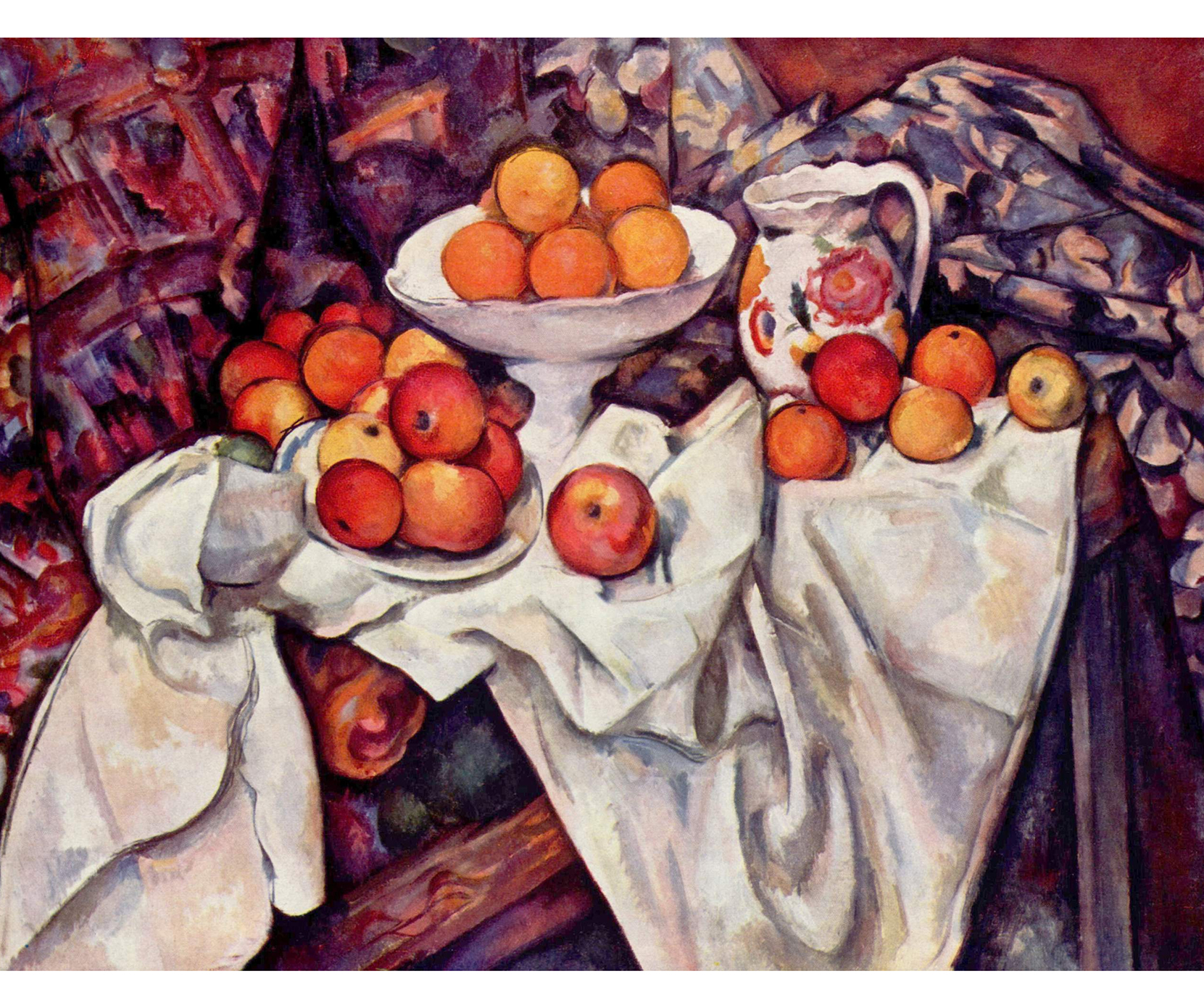Widely known for his use of unconventional industrial materials, Donald Sultan consistently challenges and warps the painterly surface within his works. His seminal series Disaster Paintings, produced throughout the 1980s, depicts imposing, man-made structures painted in tar on masonite tiles. The looming physicality, textured materiality, and austere subject matter of these large-scale works explore society’s catastrophic events and propensity toward self destruction. Careful not to confine his practice solely within dark content, Sultan also concentrates on flowers, fruit, and close-up images of urban details. These paintings still employ Sultan’s signature technique of attaching tar-encrusted linoleum tiles to masonite. With a higher level of subtlety, Sultan continues to gouge, spackle (fill a crack with paste), douse, and smother his pieces; creating a collection of works infused with raw energy.
Spanning a huge 96 inches, Fifteen Oranges consists of tar, oil, and spackle on tile over masonite. Produced in September of 1992, the piece depicts 15 uniform, perfectly rounded oranges layered over a cluster of almond-shaped leaves. In a recent interview, Sultan divulged that in his paintings he attempts to ‘pare down images to their essence’, ultimately capturing ‘fleeting aspect[s] of reality’. By contrasting the fluidity of the human gesture against the geometry of an object, Sultan achieves a still life that borders on abstraction. Each carefully constructed object mimics its surrounding counterparts, blending into a rhythmic pattern. As such, Sultan reduces the organic forms of his still life into flattened colours and shapes.

Paul Cezanne, Apples and Oranges, 1900
Almost 100 years before Sultan began his own career, Paul Cézanne was experimenting with colour, light, and pictorial space in his own still lifes. Over the course of 1899, Cézanne completed six paintings of the same composition, an assemblage of apples and oranges sitting on a draped cloth. Rather than aiming for hyper-realistic illusionism, Cézanne was readily fascinated by optics, attempting to capture the full complexity of the human visual process. By concentrating on the visual and physical qualities of the paint, canvas, and forms before him, Cézanne masterfully produced works with a multi-layered surface and accurate perspective.
In order to create an appealing image, Cézanne often reduced the objects in his still lifes to their geometric essentials; be it the cone, cube, or sphere. He would proceed to build up these forms with layers of colour, texture, and light. Sultan utilises this ideology by scaling down his objects to such a degree that only minimal suggestions of their forms remain. For example, the dimpled texture of the citrus fruit is replaced with simple orange circles, the waxy leaves translate as homogenous silhouettes. Sultan makes the informed decision to leave his still life in its reduced condition, presenting nothing more than the geometric essence of the group of oranges. In doing so, he creates a hypnotic picture plane dominated by a confident use of colour, form, and line
(By Eleanor Lerman)
